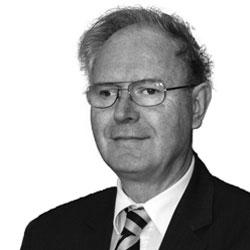
Born in 1944, Hans-Erich Laukhuff passed away in Weikersheim, Germany on February 7, 2012, shortly before his 68th birthday. Most of his early life was spent in Weikersheim, where he attended the local gymnasium (high school), followed in 1960 by a year at boarding school in Eastbourne, England.
An apprenticeship with the now-185 year-old family firm, Aug. Laukhuff GmbH & Co., culminated in Journeyman status in 1965. A few years in the drafting department and other assignments provided experience in all aspects of organ building.
1966-’67 brought Hans-Erich to St.-Hyacinthe, Québec for a year at Casavant Frères Limitée, then directed by Lawrence Phelps. The experience not only widened his horizon into North American organ building, but also provided an opportunity to learn Québécois French. Later, a few months fieldwork with a small firm in North Dakota developed in Hans-Erich an appreciation for the problems faced by technicians in service organisations.
Before returning to Germany, Hans-Erich purchased a round-robin Greyhound bus ticket and explored much of the United States, learning the idiomatic English that would later facilitate easy dialogue with his American clients.
In 1968, Mr. Laukhuff completed the Masters Course at the School for Organbuilding in Ludwigsburg, earning the Certificate of Master Organ Builder and establishing lasting friendships with colleagues in Europe and the Americas. His Master’s Project, a complete pipe organ built entirely by himself, still stands in the family home.
In 1972 Hans-Erich Laukhuff was appointed as fourth-generation Geschäftsführer (Managing Director) of Aug. Laukhuff, a position he shared jointly with his cousin, Peter Laukhuff, until Peter’s retirement in January of this year.
An avid traveller, Hans-Erich had visited 45 countries on all five continents. During rare off-duty moments, he enjoyed reading, music, walking in the forest with his black mongrel, Chappy, and occasional trout fishing.
He was particularly fond of the 3-manual, 11-rank Möller theatre organ installed in Laukhuff’s erecting room. Originally built in 1947 for a South African client, it is thought to be the only Möller cinema organ in Germany. The occasional Kino Konzert and recordings have shared his enjoyment of theatre organ music with residents of Weikersheim.
The funeral was held on February 15th at the Protestant City Church of St. George on the town square in Weikersheim. A reception followed, allowing hundreds of family, friends, staff and colleagues to share reflective moments.
Hans-Erich Laukhuff is survived by his mother, sisters, cousins, niece, nephews and a grandniece. He will be sorely missed, both personally and professionally, by many around the world.

